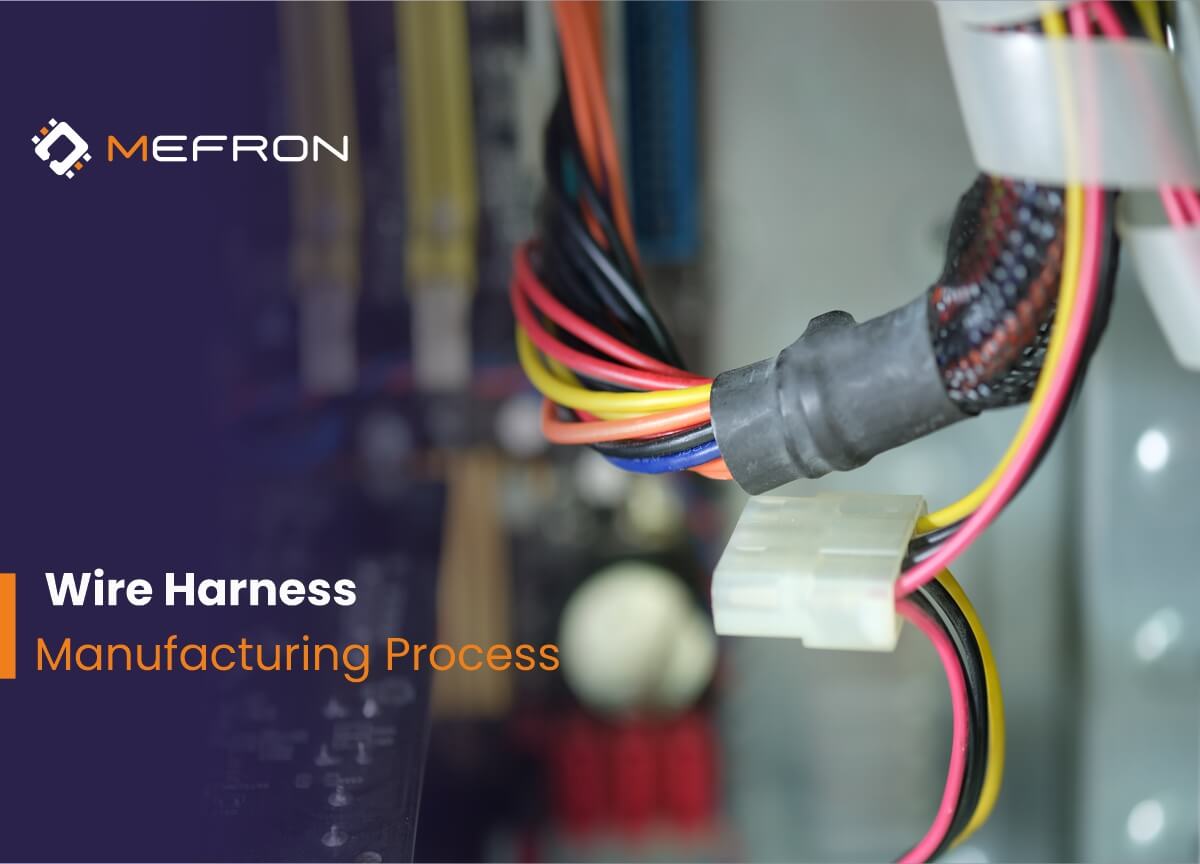Inside the Wire Harness Manufacturing Process
08 March, 2024 Posted by Gaurav Gorse

Wire harnesses serve as the silent heroes of modern technology, orchestrating a symphony of electrical connections within various devices and systems. Behind the scenes of these intricate networks lies a meticulous process that ensures reliability, efficiency, and precision.
In this article we will delve into the world of wire harness manufacturing, uncovering the steps involved in creating wiring looms, the materials utilized, and the critical role precision plays in ensuring the efficiency of electronic devices. But in the first place, we need to understand what exactly wire harness assemblies are.
Decoding Wire Harness Assemblies
A wire harness assembly, often simply referred to as a wire harness, is a structured bundle of wires or cables that are bound together using various methods such as tape, ties, or sleeves. These wires are typically insulated and grouped according to their intended function within an electrical system. Wire harness assemblies serve the purpose of transmitting electrical power and signals efficiently and reliably between various components of a system. Many people often use the term “wire harness assembly” and “cable harness assembly” interchangeably but they have definite differences in both. However, for the scope of this article, we will exclusively focus on wire harness assemblies.
Understanding the Wire Harness Manufacturing Process
Step 1: Design & Planning
The journey begins with meticulous planning and design. Every detail, from the number of wires to the layout and configuration, is carefully considered to ensure optimal performance and functionality.
Step 2: Material Selection
With the blueprint in hand, material selection is the next step. Quality is paramount in every aspect of this process. Sourcing materials that meet the highest industry standards for conductivity, durability, and reliability is critical here. From high-grade wires to robust connectors and insulating materials, every component is to be chosen with precision and care.
Step 3: Wire Harness Prototyping
Given the critical role wire harnesses play in electronic systems, thorough testing is essential. Prototyping allows for the creation of a functional model, enabling rigorous testing within the intended application. This approach ensures confidence in the harness's performance before initiating full-scale production, mitigating the risk of costly errors down the line.
Step 4: Wire Harness Production and Assembly
The creation of wire harnesses is a meticulous endeavour, where every step demands precision and attention to detail. Despite the integration of automation, the human intervention remains indespensible, particularly in addressing the intricate nuances inherent in wire and cable assembly.
Manual assembly takes centre stage, allowing for the customization necessary to tailor wire harnesses to the unique requirements of each application. This manual intervention not only resolves geometric and electrical challenges but also serves to safeguard wires against both external and internal threats, ensuring optimal performance and longevity.
Wire Cutting:
Wires are precisely cut to the required lengths using advanced wire-cutting machines, ensuring uniformity and accuracy for the assembly process.
Stripping and Connections:
Insulation is carefully removed from wire ends to expose the conductive core, allowing for the secure attachment of connector modules, housings, or terminals.
Assembly:
Skilled technicians harness the wires according to precise design specifications on specialized assembly boards, ensuring organized routing for optimal efficiency.
Testing:
Stringent safety testing is conducted to assess the durability and functionality of wire harnesses in real-world conditions, guaranteeing they meet rigorous quality standards.
In conclusion, thorough documentation is essential for successful wire harness assembly. By providing detailed information such as images of connectors, wire lists, bill of materials, assembly drawings, and testing specifications to the contract manufacturer, potential issues on the assembly floor can be minimized. This comprehensive documentation ensures clarity and accuracy throughout the assembly process, ultimately leading to the production of high-quality wire harnesses that meet the required specifications and standards.
It is always advisable to navigate the complexities of wire harness assembly by providing specifications. This approach allows EMS companies like us the flexibility to choose what best suits the harness while considering cost-effectiveness.
Looking for help with a custom cable assembly?
If you're in search of customized wire harness assembly solutions, look no further than Mefron. As your trusted manufacturing partner, we offer comprehensive services tailored to meet your specific needs. Our expertise extends beyond wire and cable harness manufacturing, encompassing Printed Circuit Board (PCB) Assembly, Plastic Injection Moulding, and Box-Build Device manufacturing. At Mefron, we're committed to delivering exceptional quality and reliability across all facets of manufacturing, ensuring your project is in capable hands from concept to completion.
For business-related inquiries, please write to us at sales@mefron.com.